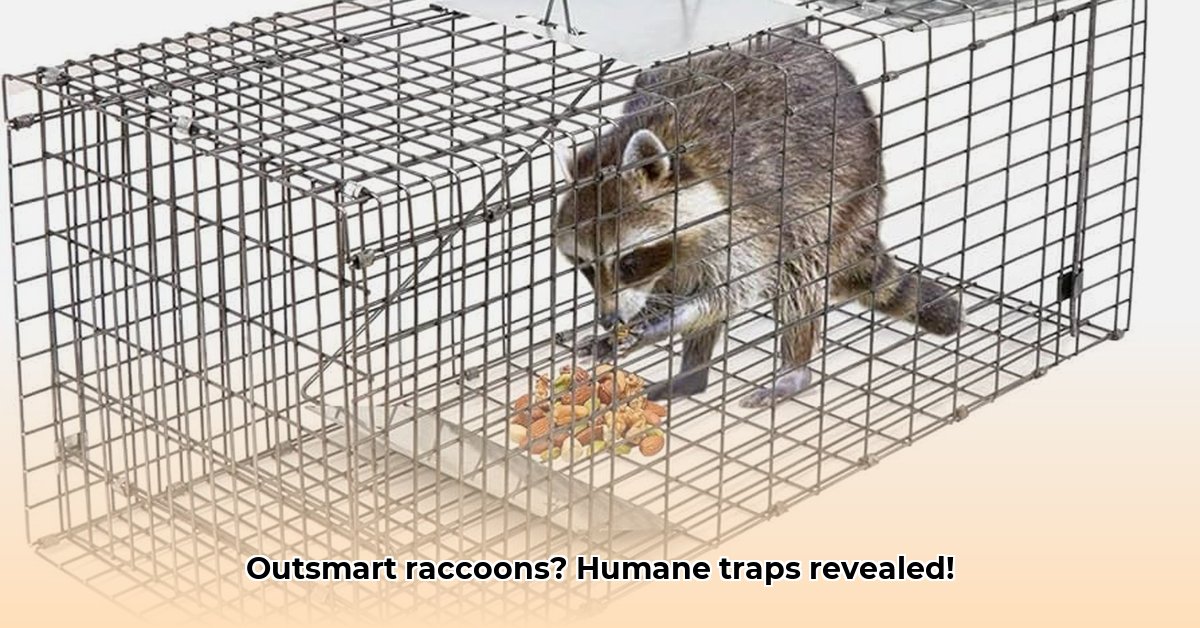
Dealing with raccoon damage to crops presents a significant challenge for sustainable farmers. Traditional methods, like rodenticides, pose environmental risks. This guide explores humane and effective raccoon trapping solutions available at Tractor Supply, emphasizing sustainable agricultural practices. We'll cover trap types, ethical considerations, practical application, and alternative strategies for integrated pest management (IPM). For more information on similar trapping solutions, check out this helpful resource on chipmunk traps.
Types of Raccoon Traps at Tractor Supply
Tractor Supply offers various raccoon traps catering to different needs and philosophies. Choosing the right trap is crucial for effective and ethical pest control.
Live Traps
Live traps capture raccoons without harming them, allowing for relocation. This aligns with sustainable farming principles by minimizing harm to wildlife. Tractor Supply offers various sizes and materials, ensuring suitability for different raccoon sizes and environmental conditions. Consider factors like ease of access for baiting and releasing the animal, and durability to withstand repeated use. Isn't preserving biodiversity a core tenet of sustainable farming?
Kill Traps
Kill traps, while effective in eliminating raccoons, raise ethical concerns within the framework of sustainable agriculture. The increased risk to non-target species and the disruption of the local ecosystem are significant drawbacks. They’re generally not recommended for those committed to environmentally responsible farming practices. Before purchasing any trap, it’s wise to carefully weigh the ethical implications against their effectiveness and convenience. What long-term ecological implications might the use of kill traps have on your farm?
Humane and Sustainable Pest Management: Prioritizing Ethical Considerations
Sustainable agriculture prioritizes humane pest control methods. Live trapping, while requiring more effort than kill traps, aligns strongly with this principle. Relocating raccoons requires careful planning to ensure their survival and minimize the disruption of the local ecosystem. Have you considered the importance of selecting a suitable release site, far from your farm, and potentially consulting with local wildlife authorities for guidance? What are the ethical implications of choosing a kill trap over a live trap to manage your raccoon problem?
Effectiveness and Limitations of Raccoon Trapping
Live trapping's success depends on several factors. A high raccoon population density might require multiple traps and consistent monitoring. Trap placement near food sources is critical. Clever raccoons may escape poorly maintained traps. Relocation might not guarantee long-term removal, as some raccoons may return. Is there evidence suggesting that relocation is consistently effective as a long-term solution to your raccoon issues?
Setting Up and Using Raccoon Traps: A Practical Guide
Effective trapping involves a systematic approach. This step-by-step guide offers a practical framework for implementing your raccoon control strategy.
- Scout and Select: Identify areas with high raccoon activity. Look for tracks, droppings, or signs of damage.
- Strategic Placement: Position traps in these areas, following manufacturer instructions. Ensure stability and concealment.
- Effective Bait Selection: Use attractive baits like fruits (berries, apples), nuts, or commercial raccoon lures. Avoid anything poisonous.
- Regular Monitoring: Check traps daily, or even twice daily during peak activity.
- Safe Handling and Relocation (Live Traps): Carefully relocate captured raccoons to a suitable, distant location with abundant natural food sources and away from human habitation. Consult local wildlife officials beforehand. Prioritize legal compliance.
- Trap Maintenance: Clean and maintain traps regularly for hygiene and continued effectiveness. How regularly should traps be cleaned to maintain their effectiveness and the safety of wildlife?
Alternative Sustainable Pest Control Strategies
Integrated Pest Management (IPM) offers a holistic approach.
- Habitat Modification: Remove potential food sources (garbage, spilled feed) and eliminate nesting sites.
- Natural Predators: Encourage natural predators (e.g., owls) where feasible and safe.
- Integrated Pest Management (IPM): Combine various methods to control populations while minimizing environmental impacts. What are the key advantages of combining trapping with habitat modification as a sustainable pest management strategy?
Future Trends in Sustainable Pest Control
Technological advancements are transforming pest control. Smart traps with remote monitoring provide data-driven solutions. Research focuses on more effective and environmentally friendly repellents and deterrents.
Key Takeaways:
- Sustainable agriculture necessitates humane and environmentally responsible pest control.
- Live trapping offers a humane alternative to rodenticides but requires consistent effort and monitoring.
- Integrated Pest Management combines various methods for effective and sustainable pest control.
- Technological advancements offer promising solutions for future sustainable pest management strategies.